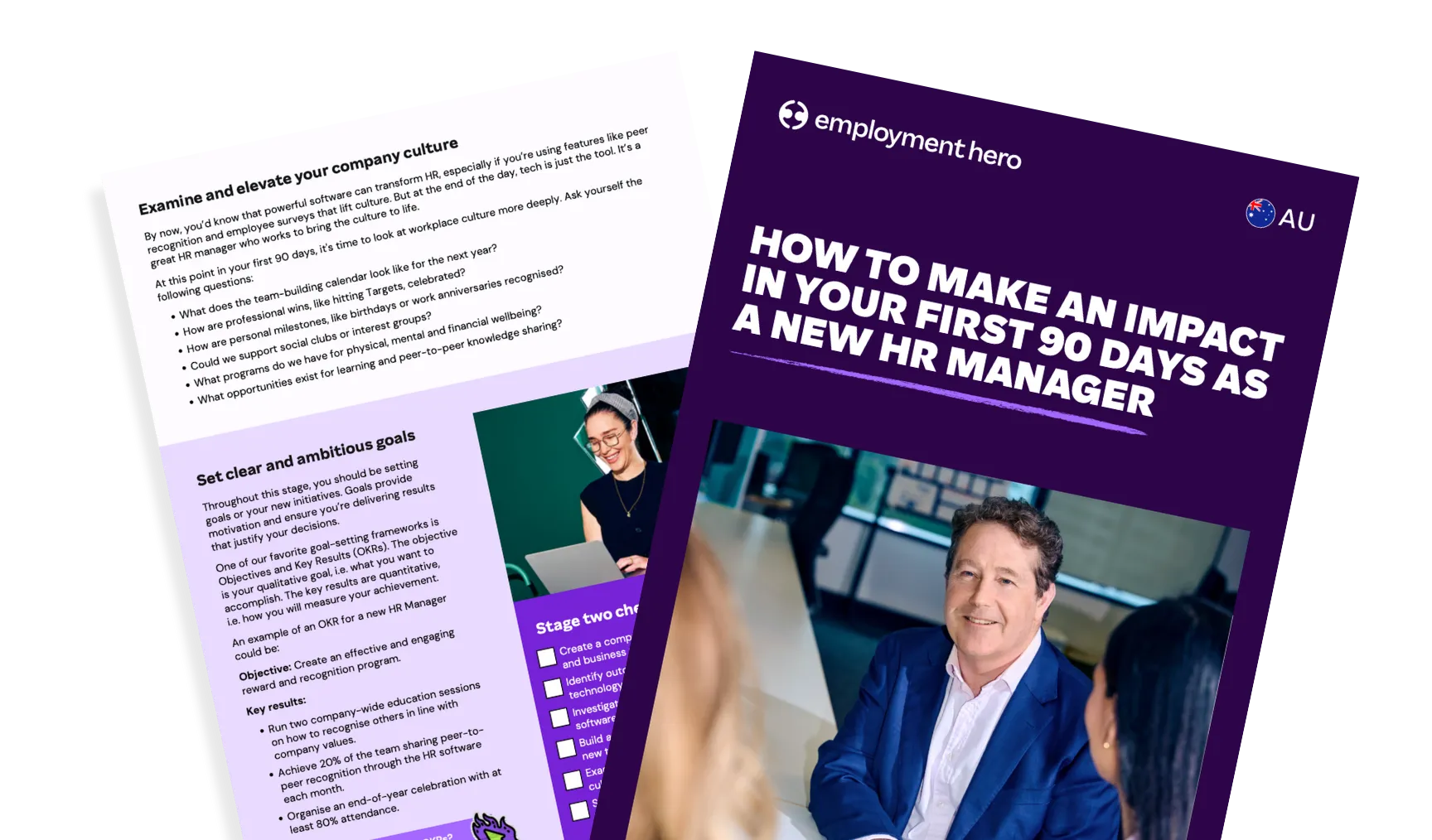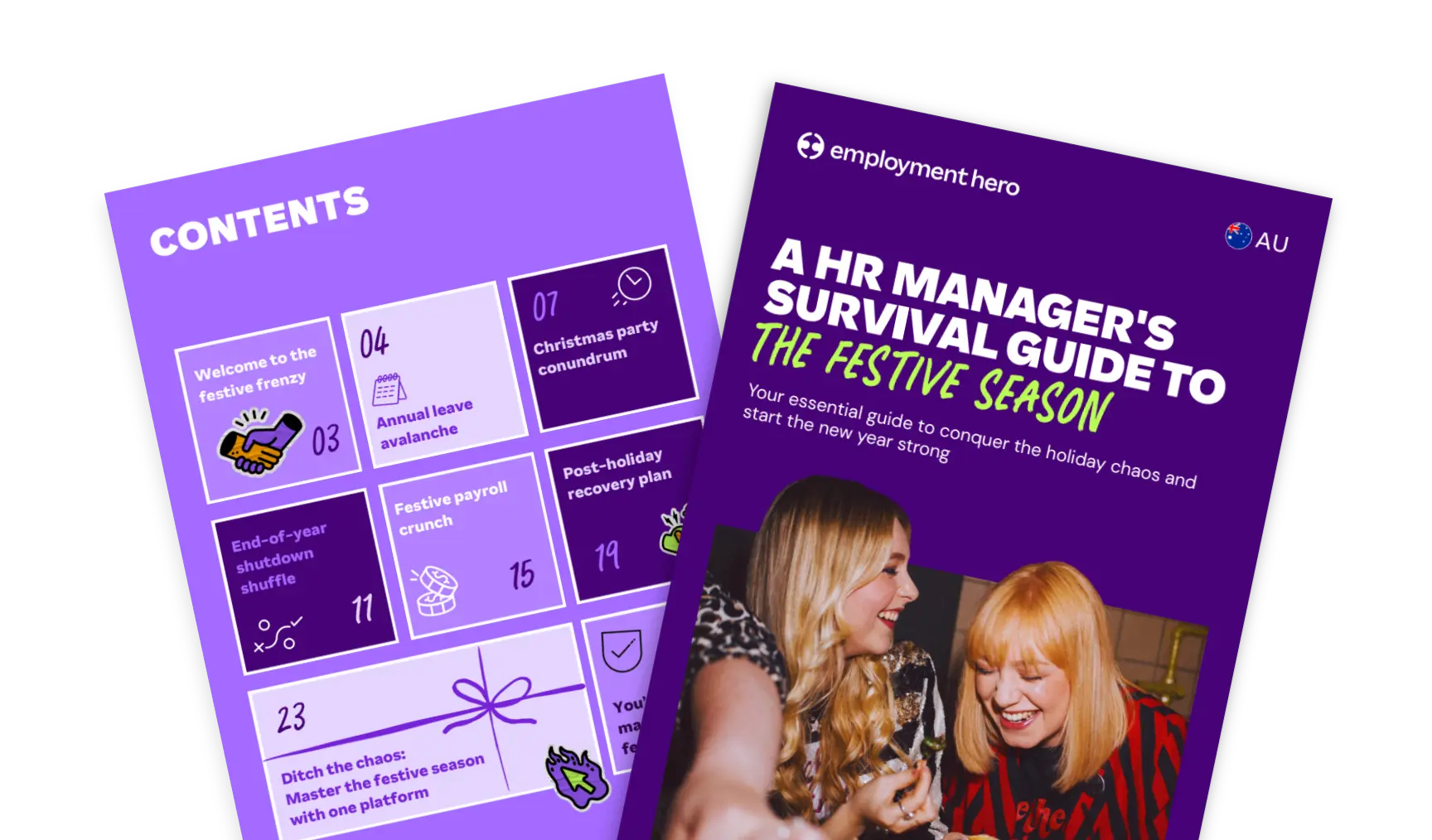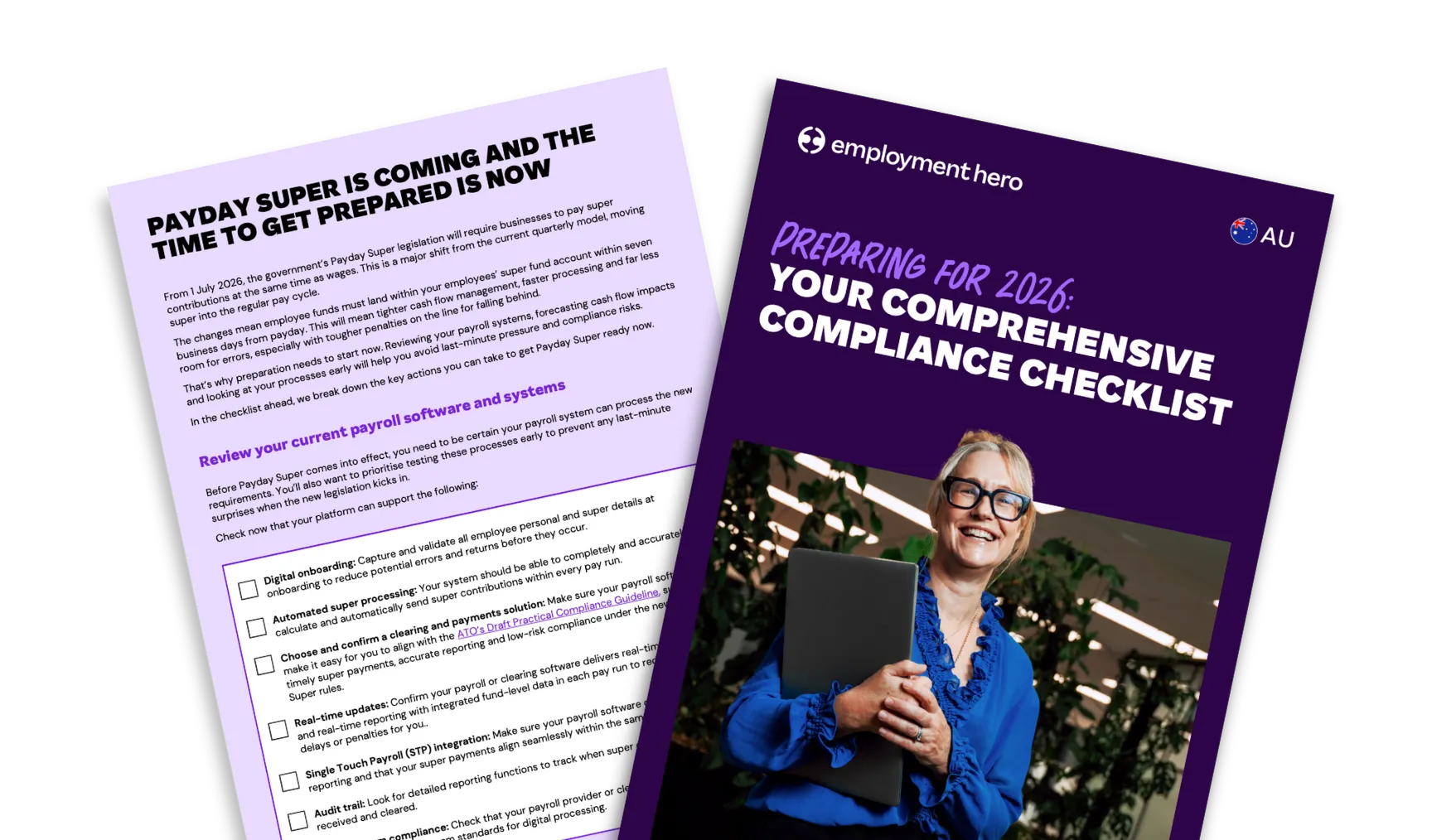At Risk of Redundancy Letter Template for Australian businesses
Published
At Risk of Redundancy Letter Template for Australian businesses
Facing the challenging task of notifying staff about potential redundancies? Your approach to this sensitive communication can make all the difference to your team’s wellbeing and your organisation’s reputation.
Understanding a genuine redundancy
A redundancy occurs when an employer no longer requires a particular job to be performed by anyone due to changes in operational requirements. This happens when a position is eliminated because of restructuring, downsizing, or closure, not because of performance issues or misconduct.
Australian businesses might opt for redundancies for several reasons:
- Economic downturns requiring cost reduction
- Implementation of new technology making certain roles obsolete
- Relocation of business operations
- Business closure or insolvency
Redundancies generally fall into two categories:
- Voluntary redundancy, where employees are invited to express interest in leaving the organisation with a redundancy package, and;
- Involuntary redundancy, where the employer selects which positions will be eliminated through a fair selection process.
“Redundancy chats are not a time to wing it. No matter how confident you are or how amazing you are with words, it’s a high-pressure, stressful situation. You don’t want to be mixing your words.” – Alana Bloom, Head of HR Partnering at Employment Hero
What’s included in this redundancy letter template
Those facing redundancy experience uncertainty, while managers making these decisions often feel the weight of responsibility.
During these challenging conversations, having the right words already prepared gives you the mental space to be truly present with your team members. You can focus on listening, answering questions, and providing support, rather than stressing about whether you’ve covered all the legal requirements in your communication.
This template helps you balance compassion with compliance during what might be one of the most difficult processes you’ll manage as an HR professional.
Inside this template, you’ll find:
- Clear language explaining the consultation process and next steps for affected employees
- Properly structured notification wording that complies with legal requirements for giving notice
- Customisable sections to outline your selection process and business rationale
- Guidance on arranging and conducting initial consultation meetings
This template is written by Employment Law experts, however, if you need assistance implementing these templates or managing complex redundancy situations, our HR advisory team can provide personalised guidance to ensure your redundancy process is handled with both legal compliance and compassion.
What is the lawful process for the redundancy selection process?
Conducting a lawful redundancy requires following proper procedures from start to finish. Understanding each step helps ensure your redundancy process complies with regulations while treating employees fairly.
Here’s what you need to know about selecting employees, providing notice, making redundancy payments, and conducting consultations.
Choosing which roles and employees to select
When determining which roles may be redundant, employers must use fair and objective selection criteria. Enterprise agreements or modern awards may specify criteria to follow during the selection process. Document your decision-making process thoroughly, focusing on business needs rather than performance issues.
Consider factors like skills, qualifications, experience, and length of service to make defensible decisions that won’t trigger unfair dismissal claims.
Understanding a fair notice period
The notice period required depends on the employee’s length of continuous service and age. Check the relevant modern award or enterprise agreement as it may prescribe longer notice periods than the minimum standards.
Employees must receive their notice in writing, clearly stating their final day of employment. Providing payment in lieu of notice is an option, but calculations must include all entitlements they would have received if working through the notice period.
Understanding the consultation process
The consultation process is a legal requirement under the Fair Work Act. Begin with a written notification to affected employees, followed by at least one formal consultation meeting.
The consultation process should be genuine, providing employees with real opportunities to respond and suggest alternatives.
“You have a very unpredictable element in a redundancy meeting, and that’s the person sitting in front of you. You have no idea how someone is going to react. So control what you can—your messaging and your communication style.” – Alana Bloom, Head of HR Partnering at Employment Hero
Understanding redundancy pay and entitlements
Redundancy pay is a key entitlement for employees whose positions become redundant. The Fair Work Act sets out minimum payment scales based on years of continuous service, but your enterprise agreement may establish more generous arrangements.
Ensure you calculate all outstanding entitlements accurately, including notice periods, annual leave, and long service leave. Provide detailed written summaries of these entitlements to employees during the consultation process.
What does the Fair Work Act say about redundancy?
The Fair Work Act sets out specific legal requirements that all Australian employers must follow when implementing redundancies. Failure to comply can result in costly and unfair dismissal claims, which can damage your organisation’s reputation.
Meeting these five critical obligations is essential:
- Assess if the redundancy is genuine: Employers must confirm the position is truly no longer required due to operational changes. This means documenting business reasons for eliminating the role and ensuring the dismissal isn’t due to performance issues disguised as a redundancy.
- Consult with affected employees: Employers must notify employees in writing about potential redundancies and conduct meaningful consultation meetings. These consultations should occur before decisions are finalised and must give employees genuine opportunities to provide feedback and discuss alternatives.
- Calculate correct notice periods and pay: Employers must provide proper notice based on the employee’s length of service and age. Additionally, calculate redundancy pay according to the Fair Work Act scale.
- Explore redeployment options: Employers must actively search for and offer suitable alternative positions within the organisation or related entities. Document all redeployment considerations, even if no suitable positions exist, to demonstrate compliance with this obligation.
- Follow proper documentation procedures: Maintain comprehensive records of the entire redundancy process, including business case documentation, selection criteria, consultation meeting notes, and written notifications. Proper documentation provides protection against potential unfair dismissal claims.
What impact do redundancies have on managers and employees?
Redundancies are never just a quick decision—they have a ripple effect that touches every part of an organisation. From the emotional strain on managers and the uncertainty felt by remaining employees to the personal and professional upheaval faced by those being made redundant, the impact is widespread. Recognising and addressing the emotional toll across all levels of the business becomes vital when managing the process with empathy and care.
Impact on managers
Redundancy processes can place significant emotional and logistical strain on managers. They are often responsible for delivering difficult news, managing emotional reactions, and maintaining operational continuity. The pressure of making fair, transparent decisions, while possibly dealing with feelings of guilt or doubt, can affect their wellbeing and morale.
Impact on remaining employees
Employees who stay after a redundancy process may experience “survivor’s guilt,” uncertainty about their own job security, and a drop in motivation or trust in the organisation. Morale can decline, and productivity may suffer if communication and support aren’t handled effectively. There may also be the concern that they have to pick up the extra work their colleagues previously handled, or that their role will be compromised by the limited team resourcing.
Impact on redundant employees
For employees who are made redundant, the experience can be deeply distressing, emotionally and financially. Many face anxiety, loss of identity, and fear about their future prospects. How the process is managed can greatly influence how they perceive the organisation post-departure.
“You’re making the role redundant, not necessarily the person. So take the opportunity to reflect on and acknowledge their contributions during their time with the organisation.” – Alana Bloom, Head of HR Partnering at Employment Hero
Ways to support everyone involved
To minimise the emotional toll and long-term impact of redundancies, it’s essential that organisations take a structured, empathetic approach to supporting all affected groups—managers, remaining employees, and those being made redundant.
For managers, the responsibility of leading through redundancies can be incredibly challenging. They’re not only tasked with making difficult decisions but also delivering tough news and supporting their teams through uncertainty. To support your managers, you can offer confidential counselling and mental health services to help them manage stress, stay resilient, and lead with empathy. You can also keep them involved in the conversation ahead of final decisions, to help them better prepare for tough conversations, as well as plan for their remaining team.
For remaining employees, a sense of security and transparency is key to maintaining morale. After witnessing redundancies, they may feel anxious, disconnected, or uncertain about their own futures. Open communication from leadership, coupled with visible support systems, can help rebuild trust and motivation. In this instance, an Employee Assistance Program (EAP) can be a great way to support your staff.
For employees affected by redundancy, it can be an emotional experience. Providing outplacement support, job search tools, and career coaching is important, but so is caring for their emotional wellbeing. As mentioned above, this is another area where an EAP can be beneficial. EAPs ensure that redundant employees have access to free, confidential counselling, helping them navigate feelings of anxiety and uncertainty with professional guidance.
In difficult times, how a business supports its people speaks volumes. If you’re currently exploring redundancies for your business, Employment Hero’s EAP can help during the redundancy process to deliver real, meaningful support.
What should be discussed in the consultation meeting?
Consultation meetings are a critical component of the redundancy process, providing an opportunity for transparent communication and meaningful dialogue while minimising workplace conflict.
When conducting these meetings, ensure you cover these essential topics:
- Business rationale for change: Clearly explain the specific operational reasons driving the potential redundancies.
- Selection criteria used: Outline the objective criteria used in the selection process and how they were applied fairly.
- Potential alternatives to redundancy: Actively discuss possible alternatives such as reduced hours, job sharing, or redeployment opportunities.
- Timeframes and next steps: Provide clear information about the consultation period duration, when decisions will be finalised, and potential end dates.
- Support available to employees: Detail the support services available, redundancy pay calculations, and how to access these resources.
Document all consultation meetings thoroughly and provide employees with written minutes to reflect a record of your compliance with the consultation process requirements.
Need help managing your redundancy process? Download this template to get started, or speak with our HR advisory team about how we can help you manage the entire redundancy process.
Our Employment Operating System can help you manage it all digitally. From creating compliant notification letters to tracking consultation meetings and calculating correct entitlements, our system ensures you meet all obligations while supporting your team through this challenging transition.
To download the toolkit, we just need a few quick details.
Related Resources
-
 Read more: Your first 90 days as an HR manager: a complete 30-60-90 day plan
Read more: Your first 90 days as an HR manager: a complete 30-60-90 day planYour first 90 days as an HR manager: a complete 30-60-90 day plan
Starting as an HR manager? Follow this 30-60-90 day plan to build trust, set strategy and make an impact in…
-
 Read more: HR Managers: Don’t just survive the festive season, master it
Read more: HR Managers: Don’t just survive the festive season, master itHR Managers: Don’t just survive the festive season, master it
Make year-end easier: manage leave, payroll, parties and shutdowns with confidence. Get practical tips for Australian SMEs. Download the free…
-
 Read more: Preparing for 2026: Your Compliance Checklist
Read more: Preparing for 2026: Your Compliance ChecklistPreparing for 2026: Your Compliance Checklist
Get your business ready for the 1 July 2026 changes. See practical steps for Payday Super, cash flow planning and…























